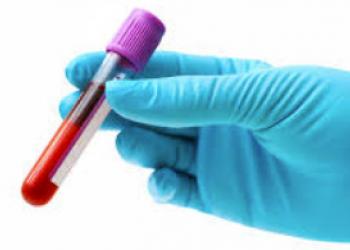
Unconscious DUI Suspects and Warrantless Blood Draws
The Fourth Amendment “almost always” permits a warrantless blood draw from an unconscious DUI suspect who is hospitalized. An unconscious DUI suspect who is hospitalized and about to go into surgery is a sufficient exigency allowing for a warrantless blood draw.
On October 27, 2017, Defendant Alberic Roland Nault had a dilemma. His pickup truck had been impounded a couple of months earlier when last busted for DUI (his 4th since 2000), and he wanted it back. The problem was that the tow yard where defendant’s pickup was being held wouldn’t let him have the truck as long as his driver’s license was still suspended. So he paid a stranger $100 to show the tow yard employees a valid license to get the truck out of hock. Somehow this ruse worked, and defendant drove away in his vehicle. Celebrating his cleverness, defendant got wasted once again. And despite having previously been subjected by various sentencing courts to a “morgue program designed to snap him into focus,” as well as two other alcohol awareness programs, defendant decided to go for a drive. At 7:00 p.m. that evening, defendant found himself on a dark two-lane highway, stuck behind an “18-wheeler” truck. The 18-wheeler, being driven by Laurentino Doval Carlos, was doing only about 50 mph in a 55 mph zone, holding defendant back. So defendant tried to pass him, revving his pickup to about 70 mph as he pulled around the truck. Despite Doval slowing his truck so that defendant could make the pass, defendant hit head-on an approaching Honda Civic. Doval stopped and attempted to assist the drivers of both vehicles which, by then, were on fire. He found the female driver of the Honda to be deceased; “crush(ed) . . . to death” by the force of the impact. Doval was able to rescue defendant, however, despite defendant being seriously injured. Doval later testified to smelling a strong odor of alcohol on defendant’s breath. California Highway Patrol Officer Carlos Burgos-Lopez arrived at the scene at 7:28 p.m., finding a semi-conscious defendant being treated in the back of an ambulance. Noting that defendant’s pants were soaked with alcohol, the officer asked him what he had been drinking. Defendant simply responded in a “thick” voice; “Beer.” Defendant’s injuries prevented Officer Burgos-Lopez from obtaining a complete statement as he was put into a helicopter for emergency evacuation. The Officer did note at the scene, however, that while the skid marks from the Honda were evident, there were none for defendant’s pickup truck. CHP Officer Riley Beckinger met an unconscious defendant at the hospital where he also noted the strong odor of alcohol. Told by the hospital staff that they were taking defendant into surgery shortly, Officer Beckinger had the nurse draw two vials of blood from defendant, promising to obtain a search warrant after the fact (which was in fact later done). The blood was drawn at 9:11 and 9:12 p.m., two hours and eleven minutes after the crash. Upon analysis of that blood, it was determined that defendant’s blood-alcohol level was 0.14%; almost twice the legal limit. Charged in state court with second degree murder (per P.C. § 187(a)), gross vehicular manslaughter while intoxicated (P.C. § 191.5(a)), and driving a vehicle with a suspended license (V.C. § 14601.5(a) & (d)(2)), with four prior DUI convictions also alleged, defendant’s pre-trial motion to suppress the blood-alcohol results was denied. Convicted by a jury of all the above, and after admitting the prior convictions, defendant was sentenced to state prison for 15-years-to-life (plus a year in county jail). He appealed.





